
The early years of late Prime Minister Atal Bihari Vajpayee captured in a new biography, Vajpayee: The Ascent of the Hindu Right 1924-77, by Abhishek Choudhary are not just instructive on the manner in which Vajpayee dealt with questions of politics and ideology, but also the fluid lines between conservative and liberal politics in the years pre- and post-independence. In what would seem unbelievable now, the book explores how both the Congress and the Sangh Parivar tried to co-opt each other for many years, till, the conservatives in the Congress were overrun by progressives. In a conversation, Choudhary busts several myths surrounding Vajpayee and how the formidable election machinery of the Bharatiya Janata Party (BJP) originated and grew. Excerpts from an interview.
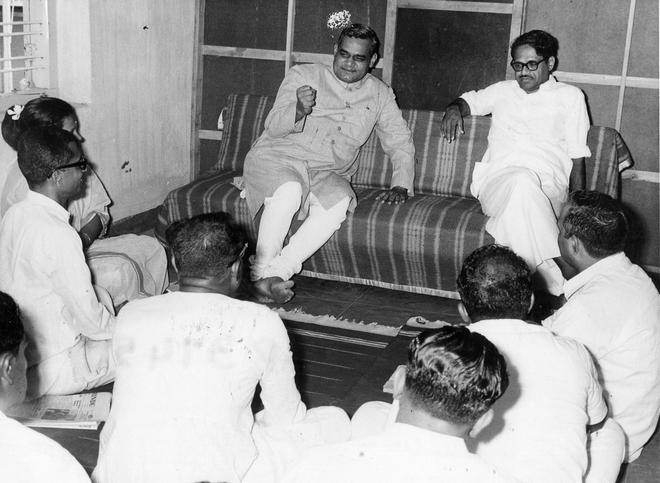
Do you agree with the view that Vajpayee was the “right man in the wrong party”?
Not at all. He was the right man in the right party, and not just that, he was leading that party. This narrative of the “right man in the wrong party” surfaces around the time the Janata Party government came to power, and in the 1980s.
How does this narrative begin in the 1980s?
Well, the original title of the book was ‘The Believer’s Dilemma’ and the U.K. edition still has that title. The reason was that Vajpayee’s real dilemmas on larger questions, like the direction of Hinduism or on governance, began towards the end of the Janata government, and the differences with the RSS on some of these issues came out in the public for the first time, during that period. In fact, Vajpayee wrote an article in The Indian Express in 1979, saying that though he was from the RSS, the organisation shouldn’t have held certain views or maintained a distance from the Janata government, and that really stung the RSS. After the fall of the Janata government, and in the political chaos that followed, the RSS did not have too many choices and went with Vajpayee, because the Jan Sangh was of the view that it was the ‘real’ Janata party of JP (Jayaprakash Narayan) which included co-opting the latter’s ideas of Gandhian socialism that found its way in the newly-formed BJP.
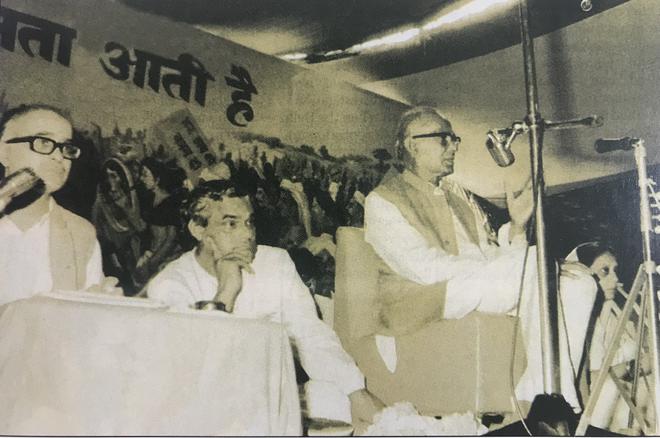
The Jan Sangh was consciously projecting the idea that together with the new BJP, they were “JP’s party”. So, these dilemmas and confusions began in the late 1970s and manifested itself in the late 1980s. In the early years, Vajpayee was leading the Jan Sangh and that stream of ideology. His travels too affected his thought process.
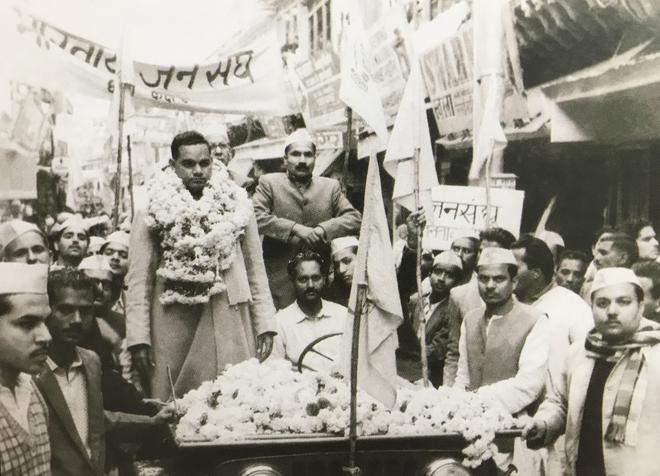
How influential were his travels in forming his world view?
Vajpayee’s world view widened significantly with his travels, especially when he went abroad. I write in great detail about his visit to the U.S., which was his first trip abroad, where he was astounded by the multi-cultural and multi-ethnic society. He was curious about what bound society together. After that he travelled as part of almost every parliamentary delegation, so much so that by the time he became external affairs minister in 1977, he had travelled to over 16 countries which, in that time of rare foreign travel, was extensive. His worldview widened because of all this, in the way that it did not happen for the RSS.
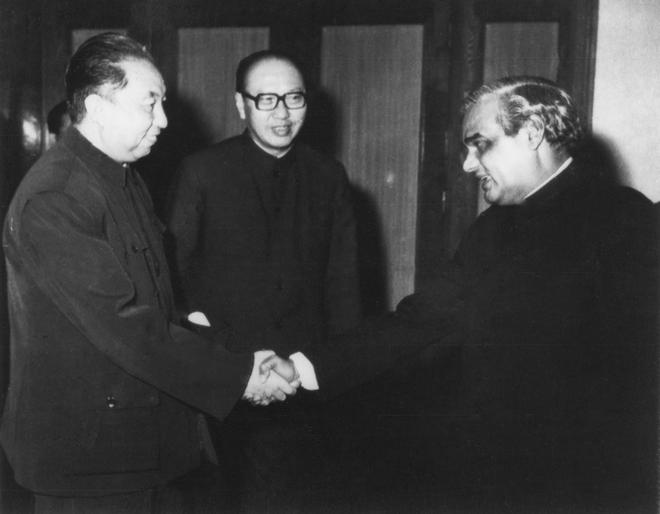
The rigid lines between the Sangh Parivar and other parties we see now is absent in your book. You write in detail about how the RSS in the 1940s, and even Jan Sangh, was ready to work with the Congress.
The line between secularism and communalism or between progressives and conservatives was not that rigidly drawn. For example, Mauli Chandra Sharma (“a tier-two Delhi Congressman”) arranged the funeral of Mahatma Gandhi, at a time when Nehru was around. Also, the RSS didn’t want much to do with the Hindu Mahasabha by that time and was also seeking state patronage, because of which it reached out to Sardar Patel, who represented the conservative element in the Congress. Sardar Patel had been wanting to co-opt the RSS for a while, predating Vajpayee, and he had told B.S. Moonje (of the Hindu Mahasabha and co-founder of the RSS) that he should join mainstream politics. In fact, in a letter of Sardar Patel’s daughter, Maniben Patel, says that “Bapu [Sardar Patel] wants them [the RSS] to join the Congress.”
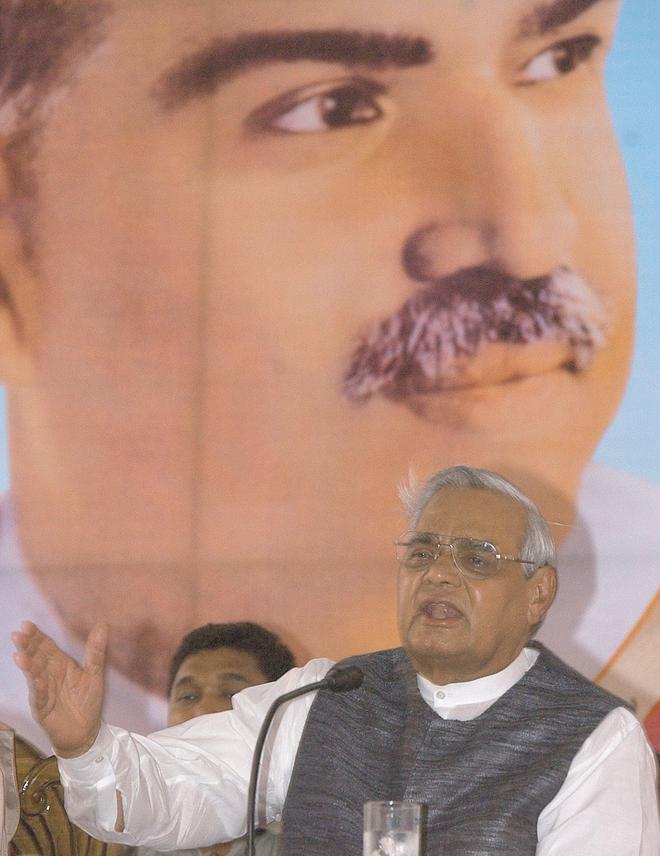
Vajpayee comes across as quite conflicted about economic policy more than anything.
In the early years, the Sangh Parivar did not think much of economics or foreign policy as they were not even a party to begin with. When they did form the Jan Sangh, the economic policy was ad hoc. They also took into account their constituency of upper caste voters who had land holdings or the small traders in opposing Nehru’s focus on big industry and land reforms. They were also reactive to radical changes. For example, when Indira Gandhi announced nationalisation of banks, the Jan Sangh initially opposed it, and it changed its stance after it was seen to be a popular move. When the NDA government was formed, all these contradictions came home to roost, where the Vajpayee government’s economic reforms policy found him in an adversarial position with his friend of 55 years, Dattopant Thengadi, who founded the Swadeshi Jagaran Manch and the Bharatiya Mazdoor Sangh.

Do you agree that Indian socialists and the Emergency movement mainstreamed the Jan Sangh and the BJP?
I don’t really agree because at that time the situation was such that to fight the Congress behemoth they needed the Jan Sangh. Earlier, the Jan Sangh had tried to tie up with right wing outfits like the Hindu Mahasabha and the Ram Rajya Parishad which had obscurantist views on caste reforms etc., but they could not because of these very reasons. The socialists and others saw that the Jan Sangh had a presence in electoral politics, and were not like the Mahasabha and other such parties. Throughout of course, there were ideological differences, like Madhu Limaye was deeply opposed to them, while Madhu Dandavate was in favour of extending the benefit of doubt to the Jan Sangh. Most however, were in favour of giving the Jan Sangh a chance, including Jayaprakash Narayan, as the situation developed. So this “mainstreaming” argument is only partly true as the Sangh Parivar was a part of almost all movements in independent India, from anti-cow slaughter to V.P. Singh’s anti-corruption movement. The Jan Sangh/BJP was bound to grow bigger with time, because they had an organised and disciplined cadre and were determined to acquire power.
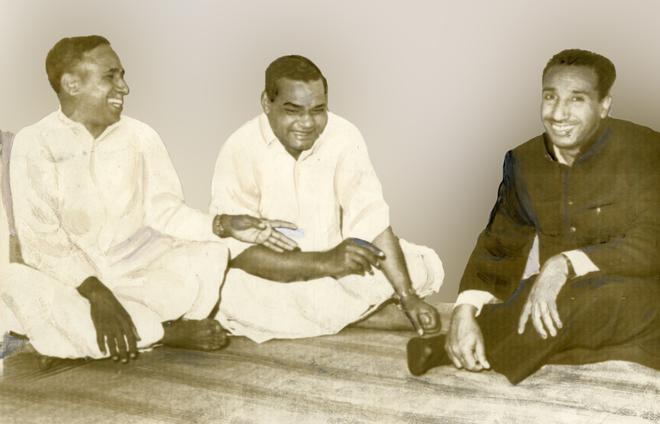
Vajpayee: The Ascent of the Hindu Right 1924-1977; Abhishek Choudhary, Picador India, ₹899.
nistula.hebbar@thehindu.co.in







